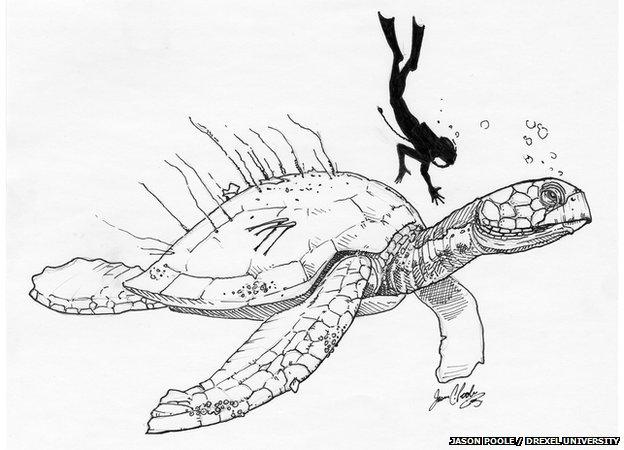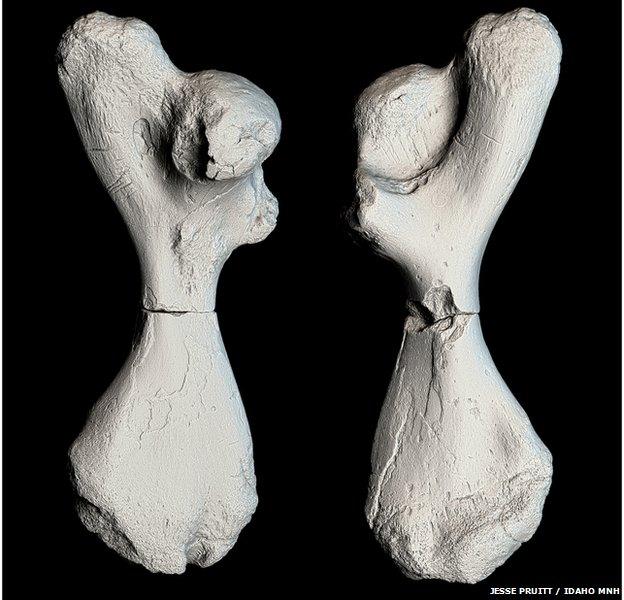Monster turtle fossils re-united
- Published

The two halves were discovered at least 163 years apart
Two halves of a fossil bone found more 160 years apart have finally allowed scientists to scale one of the biggest sea turtles that ever lived.
Atlantochelys mortoni was originally described from a broken arm bone, or humerus, found in the 1840s in the US state of New Jersey.
Remarkably, the missing portion has also now been unearthed.
The fossil fragments are a perfect match, external, and indicate A. mortoni must have been 3m from tip to tail.
"When we put the two halves together, we were flabbergasted," recalls Dr Ted Daeschler, from the Academy of Natural Sciences of Drexel University, external, Philadelphia.
"We said, 'no - that can't be!' We even turned them around trying to show they didn't match, but they're obviously supposed to be together," he told BBC News.
The re-united fossils will be described anew in a forthcoming issue of the Proceedings of the Academy of Natural Sciences of Philadelphia, external.
Both parts come from Cretaceous sediments, 70-75 million years old, in Monmouth County, New Jersey.
Very little is known about the discovery of the distal end - the end nearest to the elbow.
It received its first description from the famed naturalist Louis Agassiz in 1846. For years, it was assumed the bone was picked up in Burlington County.
But then amateur fossil palaeontologist Gregory Harpel picked up the proximal end - the end nearest the shoulder - from a brook in the neighbouring Monmouth district.
"I picked it up and thought it was a rock at first - it was heavy," Mr Harpel said.
Rocks tend not to have markings from shark bites, and so he quickly realised the find was something far more significant.
Together, the bone fragments give a much clearer view of A. mortoni, a species that would have looked very similar to the modern loggerhead - apart from its size.
"This turtle was a monster, probably the maximum size you can have for a turtle," said Dr Daeschler.
"Scientifically, we now know a lot more about this creature.
"Most importantly, we now know precisely which rock formation the original came out of, and so we can more precisely know its age, and we can be much more confident about finding additional material in that same formation and therefore telling more about A. mortoni."

This artist's representation gives a sense of how big A. mortoni was by modern standards

A 3D scan of the broken turtle limb: There is evidence of shark damage
Jonathan.Amos-INTERNET@bbc.co.uk and follow me on Twitter: @BBCAmos, external
- Published5 March 2014
- Published31 May 2013
- Published20 June 2012